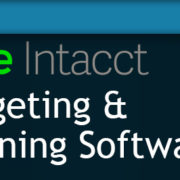Cloud Financials: The Path to Seamless Implementation
Benefits
At this point, you’re not switching to a cloud-financials solution because it’s the new trend on the block. Rather, you understand that there are tangible benefits that are immediately derived from implementation. Let’s explore a little bit.
- Rapid time to Value: this is not a ‘forever’ process; you won’t have to sign your life away to implement
- Scalability: you’ll be able to use what you need and nothing more
- Ease-of-use: once complete, operation and use of the new solution shouldn’t feel like rocket science. Instead, your employees will enjoy the intuitive aspect and ease of use and adaptability
- Global Availability: your data is only as useful when it’s accessible. Post implementation, you’ll be able to access and analyze data from anywhere with an internet connection
- No hardware or software installation or maintenance: with a cloud-based solution, updates will take place in the cloud, allowing you to say good-bye to tedious and time-consuming maintenance
- Better operations at a lower cost
- Fewer problems
The Path to Implementation Success: A.P.V.A.
First, make sure you’ve allocated a sufficient amount of time for implementation. Rome wasn’t built in a day. A cloud-based solution and implementation doesn’t happen overnight. While the overall time will vary and depend on a number of items, generally, your time frame will range from 4 to 12 weeks. Now that you’ve estimated a rough time frame, let’s say hello to the nuts and bolts of implementation: A.P.V.A.
Aligning Requirements:
This is where you ask ‘What exactly are you trying to accomplish?’ Also ask in detail ‘What are your business requirements?’ This is the time to strip away the product. Determine and confirm what is needed and convert it into a solution.
Plan Ahead
Chances are, you’ve heard the phrase ‘measure twice; cut once’. The same principle holds true throughout implementation. With better and thoughtful planning comes seamless implementation. So what does that mean? Be prepared. But how? Designate a single project manager to lead and oversee a cross-functional team. This is also the time in which you’re cleaning your data. Liken this to a spring cleaning in which you’re getting rid of obsolete account numbers, vendors you no longer work with, etc. Further, examine your processes. Determine whether your processes are being done efficiently, or if they’re being done ‘just because’.
Vendor Requisite Experience:
This step helps to confirm what your vendor has brought to the table: a dedicated project manager, consulting services, technical integration and development services, experience and financial expertise, and even a local geographic presence. In short, are you getting the vendor support you need during and following implementation?
Avoid Common Pitfalls:
A seemingly monumental task such as implementation becomes manageable when you plan ahead and prepare. This includes training. Train your end users early and often. Also, don’t neglect looking ahead: consider what lies ahead for your business down the road, in 6 months, 1 year. Design a flexible chart of accounts, allowing for change and take advantage of dimensions. Of course, take advantage of the support system in place and be sure to communicate any and all concerns. Are you considering a jump to a cloud-based solution? Consider Intacct: the leader in cloud financials, offering the best in innovation, customer satisfaction and customer support. Contact Alta Vista Technology today.










